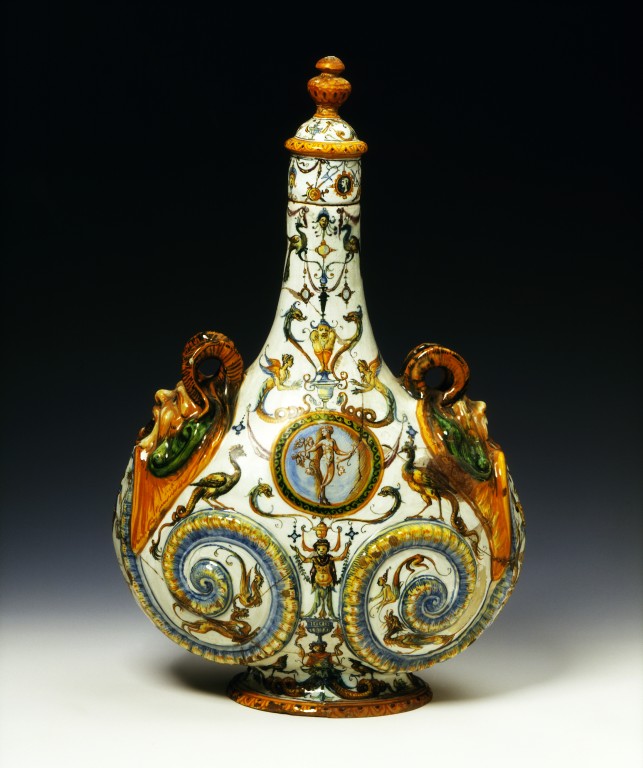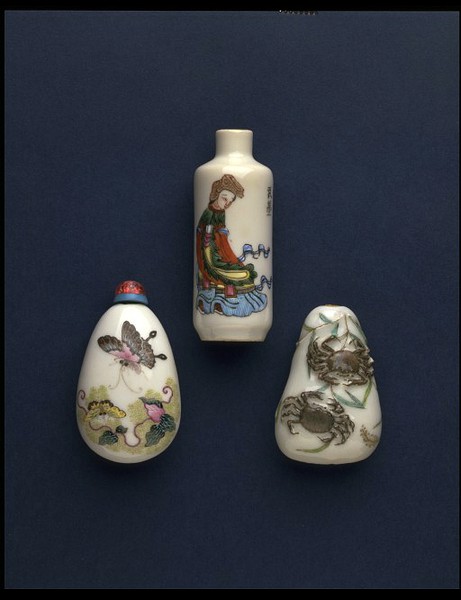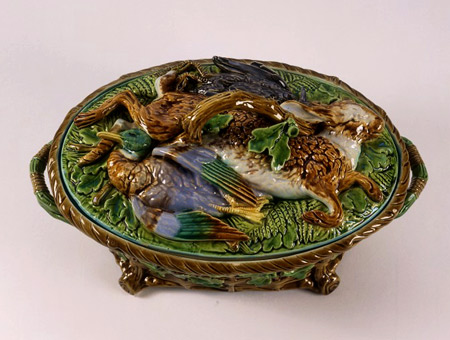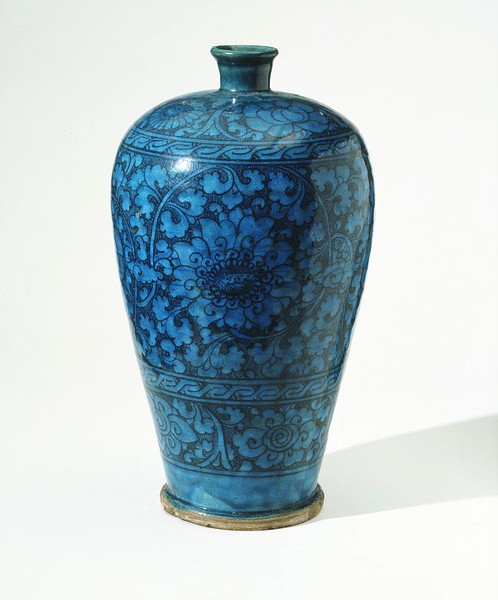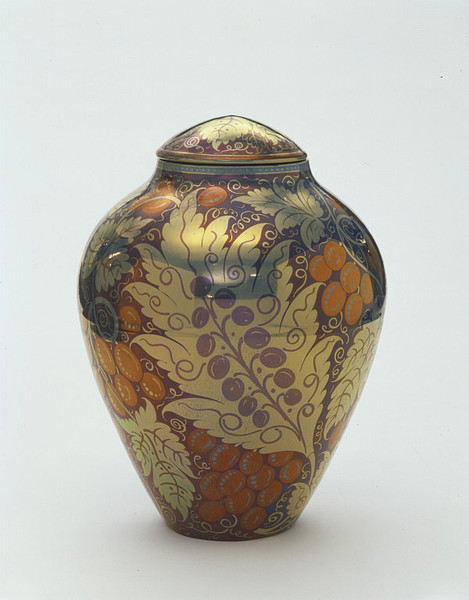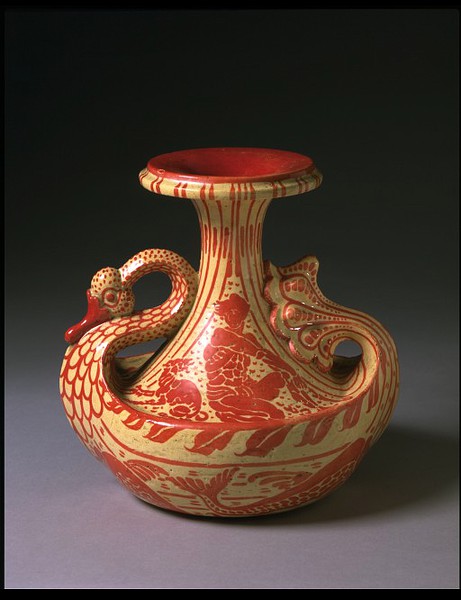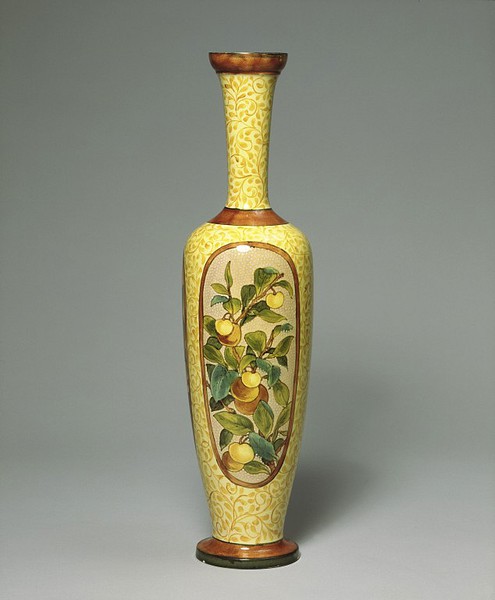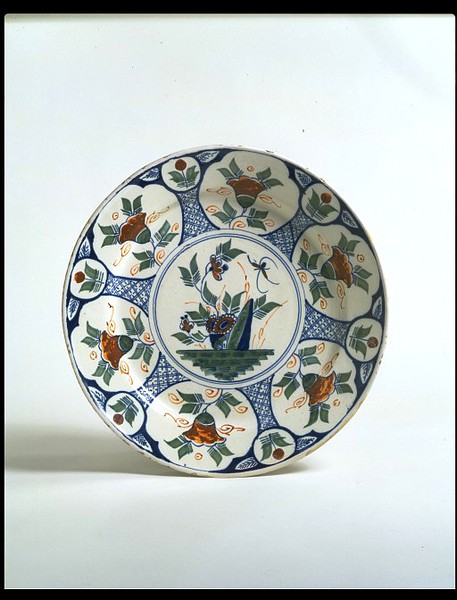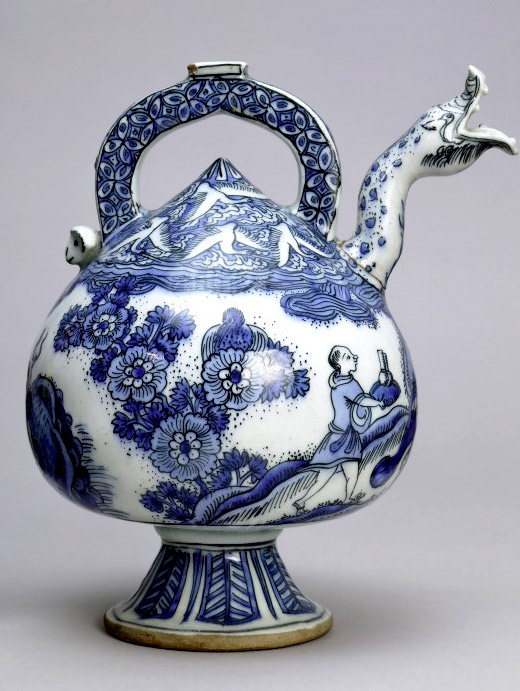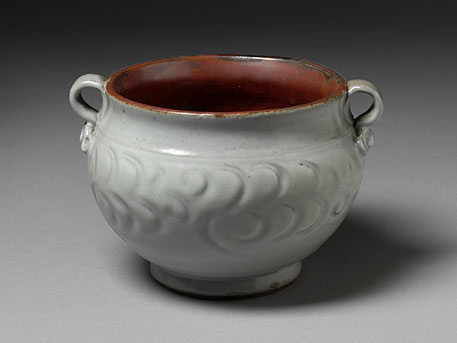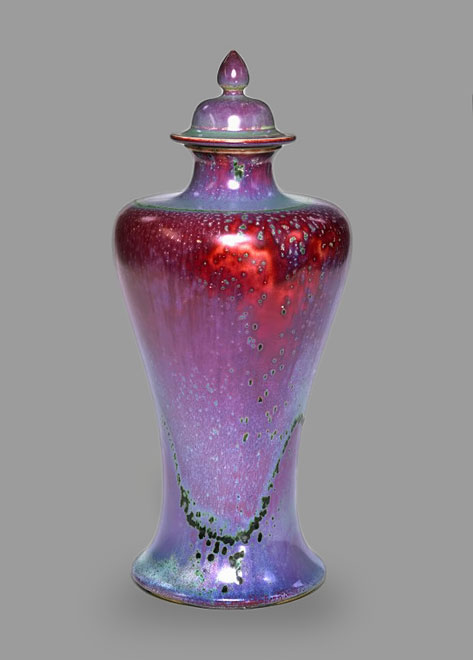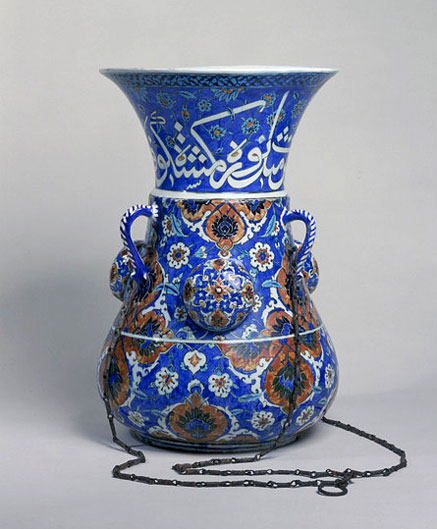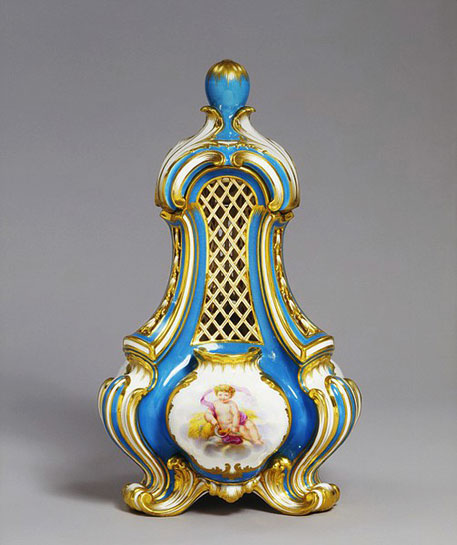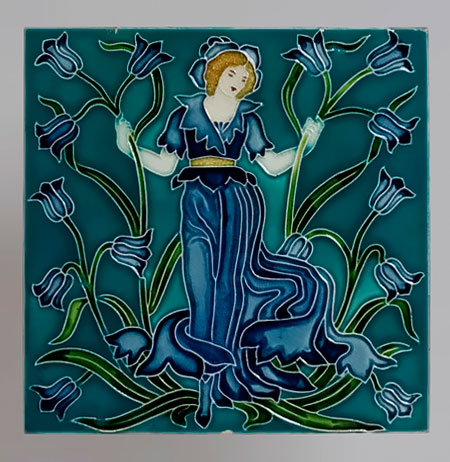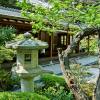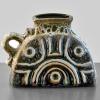The Victoria and Albert Museum’s collections span two thousand years of art in virtually every medium, from many parts of the world, and visitors to the museum encounter a treasure house of amazing and beautiful objects.
The refurbishment of the Victoria and Albert Museum’s ceramic galleries has created an important national and international centre for the enjoyment, understanding and study of ceramics and a collection that is unrivalled anywhere in the world.
Six years ago, over concern for the security of the collection, the V&A’s Ceramics galleries closed to the public. Purpose built in 1909 for the display of the Museum’s ceramics collection, the galleries had changed very little over the years and the old cases and displays no longer met modern museum standards or audience expectations.
In 2005 the V&A began the task of funding, redesigning and redisplaying the galleries so that once more the world’s most comprehensive ceramics collection could be secured for the study and enjoyment of future generations. This was completed in 2011.
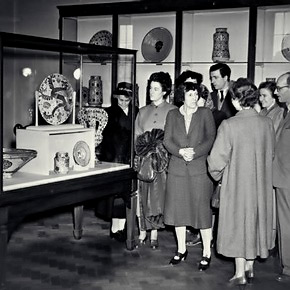 V & A Ceramic gallery in the 50″s
V & A Ceramic gallery in the 50″s
[youtube]http://www.youtube.com/watch?v=1MdvGtSBVME[/youtube]
A selection of ceramic pieces in the Victoria and Albert Museum:
Fritware bottle painted in underglaze decoration in blue and black. Iran 1500-1600
A Maiolica ( tin glazed earthenware ) pilgrim bottle made in Urbino, Italy. 1560 – 1580
Gallery location: British Galleries room122g case 2
Porcelain snuff bottles painted in enamel colours, China 1821-1850. Snuff was powdered tobacco
mixed with aromatic herbs and spices.
Gallery location: Ceramics Study Galleries, Asia & Europe, room 137, case 14, shelf 8
 Staffordshire teapot, solid agate ware with lead glaze 1740 – 1750.
Staffordshire teapot, solid agate ware with lead glaze 1740 – 1750.
British Galleries room 53a case 1
Minton and Co. Maiolica dish made at Stoke-on- Trent, 1866
Gallery location: British Galleries room 125b case 2
Chinese Handan stoneware decorated in black under a turquoise glaze, 1300-1400. this design was influenced by Syrian ceramics.
This elegant vase appealed to George Salting (1835-1909), a passionate collector who bequeathed to the Museum a large number of Chinese ceramics. When Salting bought this piece it was already more than 400 years old. The Chinese had always treasured ancient ceramics, but it was only after the opening up of China to the West after 1840 that antique items became available to other collectors. The appearance of these hitherto unknown objects on the British art market inspired artists to create new forms and patterns.
British room125c, case1
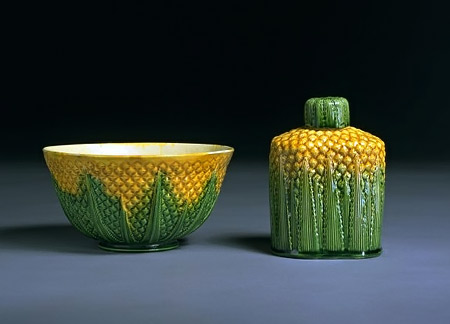 Staffordshire earthenware bowl and bottle with moulded decoration and stained lead glaze.1760-1765
Staffordshire earthenware bowl and bottle with moulded decoration and stained lead glaze.1760-1765
De Morgan earthernware vase painted in lustre. 1888-1898.
De Morgan’s passion was for the arts of the Middle and Far East. He drew virtually all his inspiration from the richly-coloured, lustred and ornamented wares of Persia (Iran), from the ‘Isnik’ wares of 16th century Turkey and from Renaissance Italy.
De Morgan gave a very clear account of his method of lustre firing in a lecture given in 1892. This, simplified, describes mixing metallic oxides, such as copper or silver, with white clay, to which was added gum arabic to make handling it easier. This was painted on and the ware was packed closely in the kiln, fired at a low heat. At the critical moment, dry material such as sawdust was introduced into the kiln and, once fired up, the kiln is shut down closing off all oxygen. This smoke-filled environment is known as a ‘reducing atmosphere’. The effect is to leave an iridescent metallic deposit on the surface, which must be cleaned and polished once the ware has cooled.
 William Ault Pottery glazed eathenware vase designed by Christopher Dresser. 1892 – 1896
William Ault Pottery glazed eathenware vase designed by Christopher Dresser. 1892 – 1896
British Galleries room125e, case 2
See more Christopher Dresser here
Shropshire earthenware vase 1889 – 1891 Designed by Walter Crane
Elizabeth Fritsch, ‘Optical Pot’, stoneware, height 311mm, width 232mm, 1980. Museum no. C.13-1981
Royal Doulton Earthenware Vase 1879 ( Lambeth ).
Tin-glazed earthenware, painted. Bristol 1720 – 1730
Ewer, 17th Century Iran
Bowl – Charles Vyse -1950
Stoneware, carved and glazed
Jug – 1620 – England
Tin-glazed earthenware, painted
Ruskin Pottery Vase
Stoneware, with a high temperature flambé glaze
Turkish Lamp – 1557
Vase with lid – design Allen Thomas
Minton Pottery – 1855
Walter Crane – 1901

![504px-283px-71120-large[1]-jpg V and A refurbish](https://www.veniceclayartists.com/wp-content/uploads/2011/08/71120-large1.jpg)

